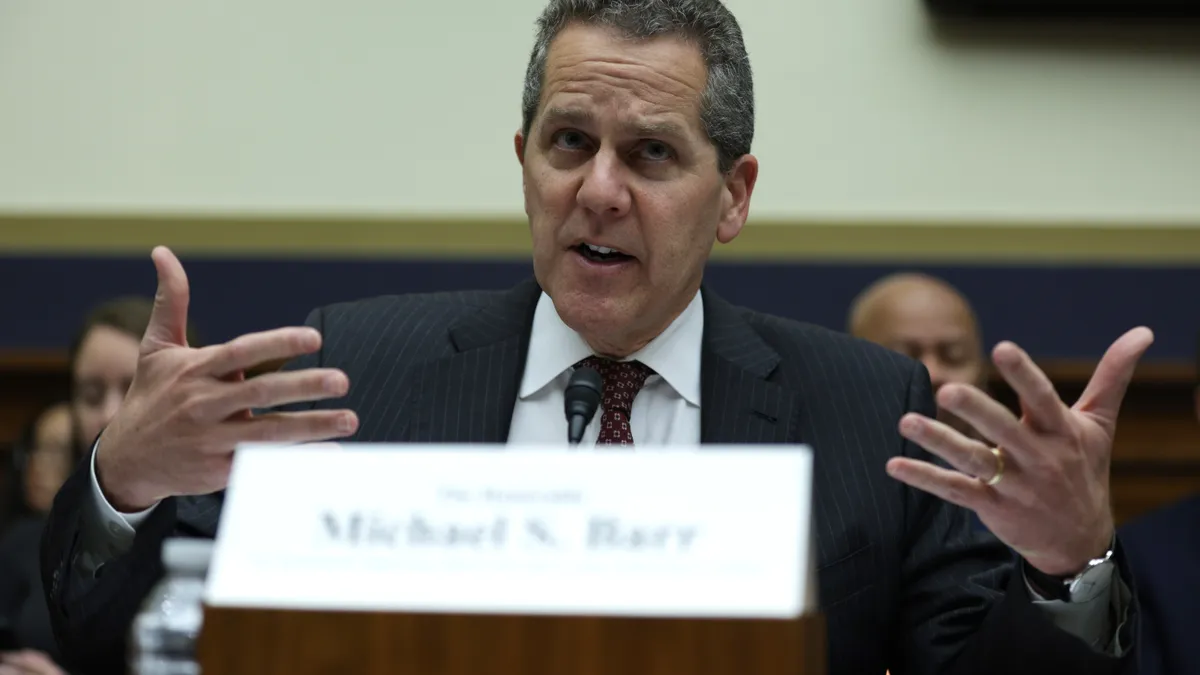Wells Fargo is embarking on a decade-long marathon to modernize its technology infrastructure, with the goal of operating multiple clouds alongside third-party data centers, the bank announced last week.
While some high-profile financial services companies have aligned with one provider, Wells Fargo plans to work with two, Microsoft and Google, to support its public cloud infrastructure. The move centers on portability and choosing the platform that best fits a given workload.
"One of our tenets, when we wrote the strategy, was to be as agnostic as possible to vendor implementations," said Christopher Marsh-Bourdon, head of hybrid environments at Wells Fargo. Rather than integrating clouds together, Wells Fargo will make choices in terms of types of workloads, technology requirements and geographic resources.
With Microsoft Azure as its primary public cloud provider, Wells Fargo will use the platform for core business workloads and bank operations from customer experience to employee collaboration, the announcement said. It will use Google Cloud for more advanced workloads, including artificial intelligence and data solutions.
Wells Fargo's publicized multicloud strategy is counter to how other large-scale, Fortune 100 financial services companies have shaped their cloud environments. Though organizations often use multiple cloud providers in practice, high-profile work is aligned with one.
Capital One has close ties to Amazon Web Services, while Bank of America is working with IBM to develop its financial services-focused public cloud. Morgan Stanley, too, took the industry cloud approach, and will use Microsoft's financial services cloud for its digital transformation.
JPMorgan Chase, meanwhile, announced Wednesday it is deploying a new, cloud-based core system for its retail bank using software developed by U.K.-based Thought Machine, American Banker reported.
"I think the best way to think about multicloud is that it is, for the most part, almost an inevitable thing for organizations of any size," said David Smith, a Gartner analyst. Whether it's clouds acquired through mergers and acquisition or targeting a vendor for best-of-breed services, "almost everyone starts with one [cloud], but they very quickly end up with more than one for a number of reasons."
Wells Fargo's multicloud pronouncement, however, is in line with where technology strategies are headed. This is embodied by the Pentagon's recent decision to cancel a heavily litigated 10-year, $10 billion cloud contract awarded to Microsoft in favor of a multicloud, multi-vendor procurement plan. Multiple vendors open the Defense Department for technology choice, avoiding lock-in and adding natural redundancy.
Creating the strategy
Operating in a regulator-heavy environment, financial services companies shape technology strategies with little risk tolerance. Any transition off seemingly stable legacy technology upsets the status quo, particularly an environment in which malicious cyberactivity is becoming commonplace.
"When you're looking at information that's highly regulated and needs to be highly available, it makes sense to have different platforms to be able to use or provide some sort of resilience or disaster recovery," said Tracy Woo, senior analyst at Forrester. Organizations want to be able to "leverage different services and also not to just put all of your eggs in one basket."
Even with a roadmap laid out, the transition to a modern infrastructure will take years. Founded in the 1850s, Wells Fargo sits atop a backbone of legacy technology and applications, all of which will require modernization, whether through lift-and-shift or re-architecting applications for a cloud environment.
Wells Fargo is likely "firmly entrenched within their legacy, on- premises structures," Woo said. Migrating very sensitive data to the public cloud is "going to be very difficult." Alongside customization, Wells Fargo will have to build new applications that can increase skills within the public cloud and transfer data.
Skills are also a focus of the bank's cloud strategy. The talent Wells Fargo employs now may not meet its long-term requirements, especially as it scales cloud usage.
To counteract that, Wells Fargo set up "colleges" to educate its workforce, from engineers to operations. To acquire certain skills, teams will attend digital and in-person courses, test their knowledge in a controlled sandbox environment and ultimately become certified. Once certified, employees can begin leveraging services.
Everyone is struggling with cloud skills, Marsh-Bourdon said. "There is a dearth of skill sets in this space and really trying to get those skills, it's more beneficial for us to bring the existing workforce forward, then obviously we'll be hiring in."
But one of its main focuses is acquiring skills in-house through upskilling efforts, Marsh-Bourdon said.
Although cloud is a well-tested environment, stakeholders and regulators at Wells Fargo were concerned with data monopolies and concentration around a single service provider, Marsh-Bourdon said. With two partners and a container strategy for workloads, Wells Fargo reduced the effort that would be needed to move workloads between private cloud, public cloud and cloud partners.
What's next for Wells Fargo
Wells Fargo won't see immediate large-scale benefits, and there is a certain amount of department-level reticence to overcome. Quick transformation wins will help, and success begets success. For Marsh-Bourdon, early wins will center around getting different types of workloads onto Google and Microsoft.
"What we are doing is unusual," Marsh-Bourdon said. "I make no bones [that] the approach we've taken is not for everybody."
The first half of the 10-year roadmap will focus on migrating the lion's share of existing applications into the public cloud, Marsh-Bourdon said.
"We're not doing the easy ones first. We're picking varying complexities of applications," he said. "That enables us to understand the right levels of the problems we have in place, as well, so we're starting with lower risk applications of various complexities and then we're iterating from there, and building up our toolkit of how we control the environment as we move forward."
The end goal is for Wells Fargo to be free of data centers, but the company is not rushing toward that future. It's instead working to make the data centers contemporary to serve as the on- and off-ramp to the public cloud.
"It really isn't about how many we move each year. It's about the impact we can make to the organization. Every time we move an application, we reduce some of the overhead on that application," Marsh-Bourdon said.




















